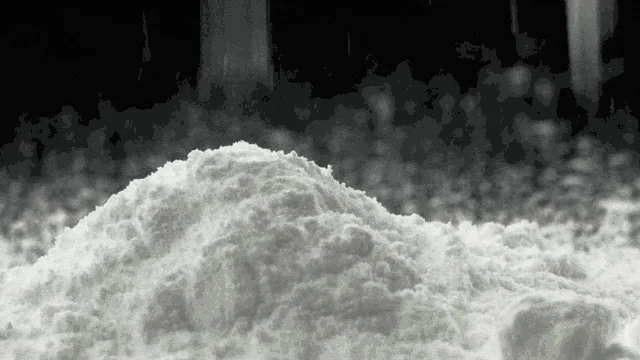Antiblock and Slip Agents are additives used in polymer processing, particularly in films, to improve the handling and performance of plastic products.
1. Antiblock Agents:
Purpose: Antiblock agents are used to prevent plastic films or sheets from sticking together (blocking) during production, storage, or handling. This sticking occurs due to the smooth surface and high surface energy of polymer films, particularly when exposed to pressure or heat.
Application:
Used in polyethylene (PE), polypropylene (PP), and other plastic films (e.g., packaging, agricultural films).
Helps in applications where films are wound on rolls or stacked, preventing them from sticking together.
Working Mechanism:
Antiblock agents create a fine roughness on the surface of the film, reducing the contact area between film layers. This minimizes surface adhesion.
Common Antiblock Agents:
Silica (SiO₂): One of the most commonly used antiblock agents. It has high thermal stability and offers excellent performance.
Talc: Another commonly used additive, offering good cost-performance balance.
Calcium Carbonate (CaCO₃): Provides both antiblock and reinforcement properties.
Grades:
Antiblock agents are available in various particle sizes. Smaller particle sizes give better optical clarity, while larger particles may be more effective but can reduce transparency.
Formulations:
Generally, antiblock agents are used at concentrations ranging from 500 ppm to 2000 ppm in the polymer matrix.
2. Slip Agents:
Purpose: Slip agents are added to reduce the coefficient of friction (COF) between film surfaces or between films and machine parts, improving processability and ease of handling.
Application:
Widely used in packaging films, labels, and bags to enhance the film’s ability to slide or release from surfaces (e.g., during winding or packaging).
Prevents films from sticking to processing machinery, improving throughput and reducing wear on equipment.
Working Mechanism:
Slip agents migrate to the surface of the polymer after extrusion and create a lubricating layer that reduces the COF.
Common Slip Agents:
Erucamide: A long-chain fatty acid amide, commonly used in polyethylene and polypropylene films.
Oleamide: Similar to erucamide but has faster migration to the surface and works well at lower temperatures.
Stearamide: Offers good slip properties but has slower migration than erucamide or oleamide.
Grades:
Available in different concentrations and purities, depending on the specific polymer and desired application.
Formulations:
Typically used at concentrations of 500 ppm to 3000 ppm, depending on the required slip performance.
Combined Use of Antiblock and Slip Agents:
Often, both antiblock and slip agents are used together in film formulations to balance their respective properties. Antiblock agents help reduce sticking between films, while slip agents improve handling and processability. However, it is essential to carefully choose the types and concentrations, as high concentrations of antiblock agents can reduce the effectiveness of slip agents, and vice versa.
Key Considerations:
Film Clarity: Some antiblock agents like silica can reduce the optical clarity of films. Therefore, careful selection is needed for applications requiring high transparency.
Migration: Slip agents tend to migrate to the surface, so over time their effect can change. The type of slip agent and its migration rate should be selected based on the application.
Thermal Stability: Both antiblock and slip agents must be stable under the processing temperatures used in film extrusion and other manufacturing processes.
Conclusion:
Antiblock and slip agents are critical in improving the performance of polymer films, especially in high-speed manufacturing and packaging processes. The specific choice of additive depends on the type of polymer, processing conditions, and the final application of the film.
Let me know if you need more details on specific formulations or suppliers!






